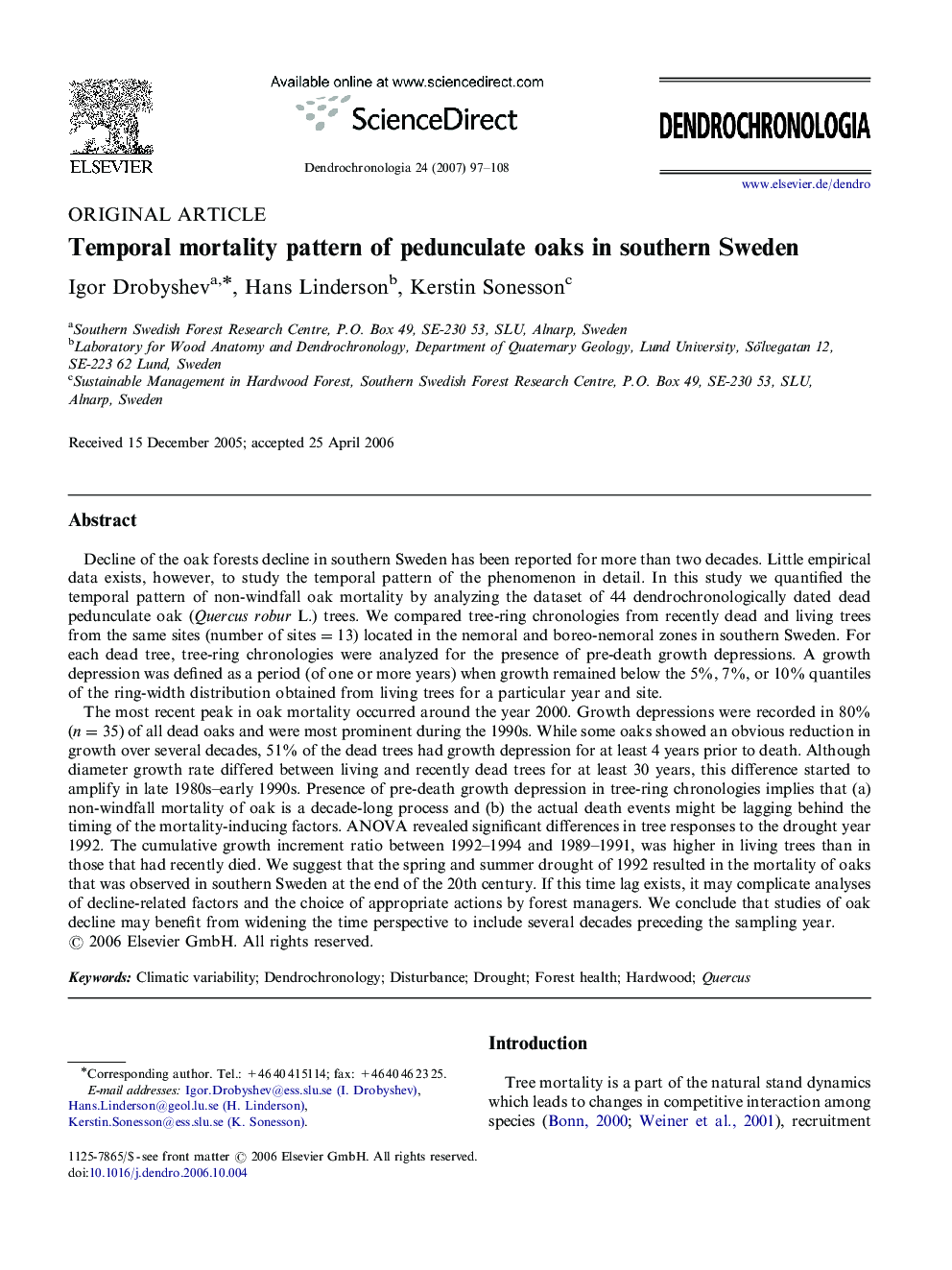| کد مقاله | کد نشریه | سال انتشار | مقاله انگلیسی | نسخه تمام متن |
|---|---|---|---|---|
| 85828 | 159129 | 2007 | 12 صفحه PDF | دانلود رایگان |

Decline of the oak forests decline in southern Sweden has been reported for more than two decades. Little empirical data exists, however, to study the temporal pattern of the phenomenon in detail. In this study we quantified the temporal pattern of non-windfall oak mortality by analyzing the dataset of 44 dendrochronologically dated dead pedunculate oak (Quercus robur L.) trees. We compared tree-ring chronologies from recently dead and living trees from the same sites (number of sites=13) located in the nemoral and boreo-nemoral zones in southern Sweden. For each dead tree, tree-ring chronologies were analyzed for the presence of pre-death growth depressions. A growth depression was defined as a period (of one or more years) when growth remained below the 5%, 7%, or 10% quantiles of the ring-width distribution obtained from living trees for a particular year and site.The most recent peak in oak mortality occurred around the year 2000. Growth depressions were recorded in 80% (n=35) of all dead oaks and were most prominent during the 1990s. While some oaks showed an obvious reduction in growth over several decades, 51% of the dead trees had growth depression for at least 4 years prior to death. Although diameter growth rate differed between living and recently dead trees for at least 30 years, this difference started to amplify in late 1980s–early 1990s. Presence of pre-death growth depression in tree-ring chronologies implies that (a) non-windfall mortality of oak is a decade-long process and (b) the actual death events might be lagging behind the timing of the mortality-inducing factors. ANOVA revealed significant differences in tree responses to the drought year 1992. The cumulative growth increment ratio between 1992–1994 and 1989–1991, was higher in living trees than in those that had recently died. We suggest that the spring and summer drought of 1992 resulted in the mortality of oaks that was observed in southern Sweden at the end of the 20th century. If this time lag exists, it may complicate analyses of decline-related factors and the choice of appropriate actions by forest managers. We conclude that studies of oak decline may benefit from widening the time perspective to include several decades preceding the sampling year.
Journal: Dendrochronologia - Volume 24, Issues 2–3, 9 February 2007, Pages 97–108